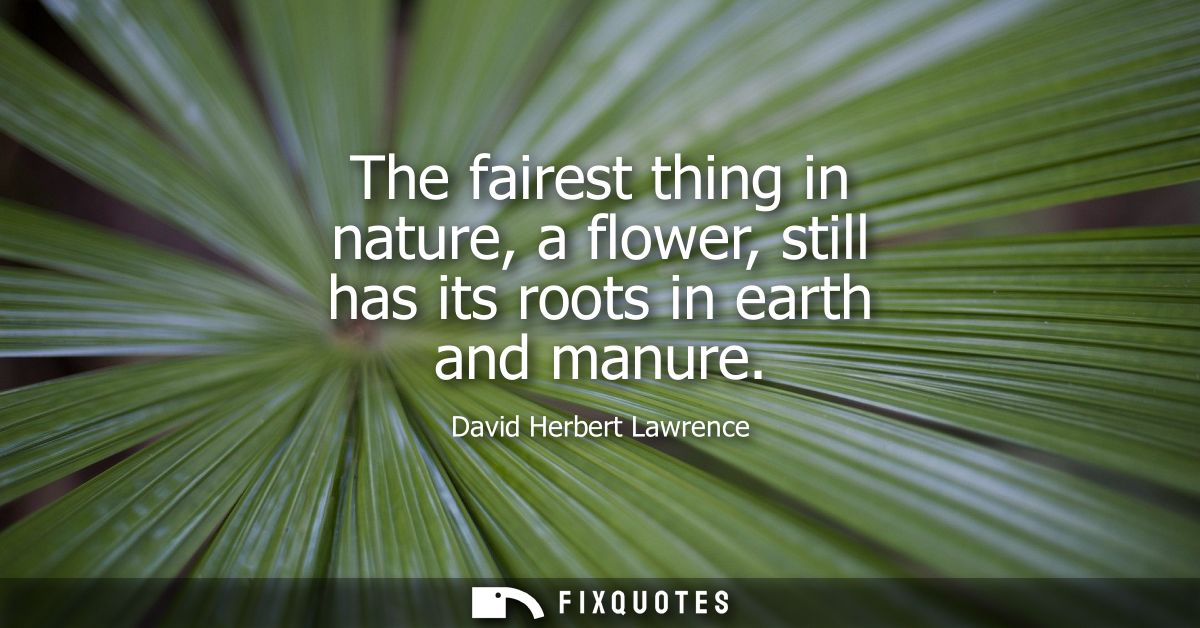"The fairest thing in nature, a flower, still has its roots in earth and manure"
About this Quote
David Herbert Lawrence’s observation draws attention to the inherent duality present in natural beauty. The flower, universally admired for its elegance and vibrancy, represents the heights of aesthetic perfection in nature. People see the blossom and marvel at its form, texture, and color, associating it with purity, love, or the sublime. Yet its life is inextricably connected to its unseen foundation: the roots embedded deep within soil, nourished by earth that is often sullied and enriched by decaying organic matter, manure, and other substances generally regarded as dirty or unsavory.
Lawrence invites reflection on the origins of beauty, suggesting that all things regarded as beautiful or noble are dependent upon processes or elements that might appear base or unremarkable. The striking allure of a flower does not spring forth independently, but instead results from an intimate relationship with the messy, nutrient-rich earth below. Life’s greatest expressions, it implies, stem from humble or even unpleasant beginnings.
This perspective encourages humility and respect for the less visible or less celebrated aspects of existence. It challenges the tendency to value only what is outwardly appealing or elevated, ignoring the crucial roles played by what lies beneath the surface. Human ambition often strives for perfection, overlooking the necessity of struggle, toil, or "manure", both literal and metaphorical, that underpins success or beauty.
On a wider scale, the statement can be seen as a metaphor for the human experience. Personal achievements, virtues, or moments of brilliance are often rooted in effort, hardship, or deep-seated emotional journeys. Recognizing the mundane, even sordid, origins of the things we cherish or aspire to can foster greater self-acceptance and empathy toward others. Lawrence’s words ultimately celebrate the interconnectedness of beauty and challenge, purity and impurity, reminding us that the most radiant flowers would not bloom without the support of the earthy darkness from which they rise.
More details
About the Author

